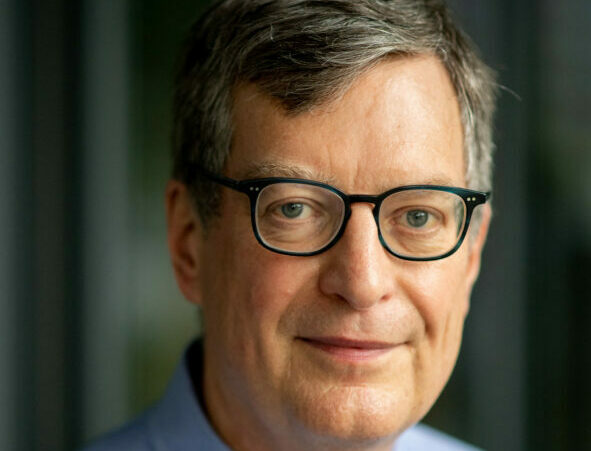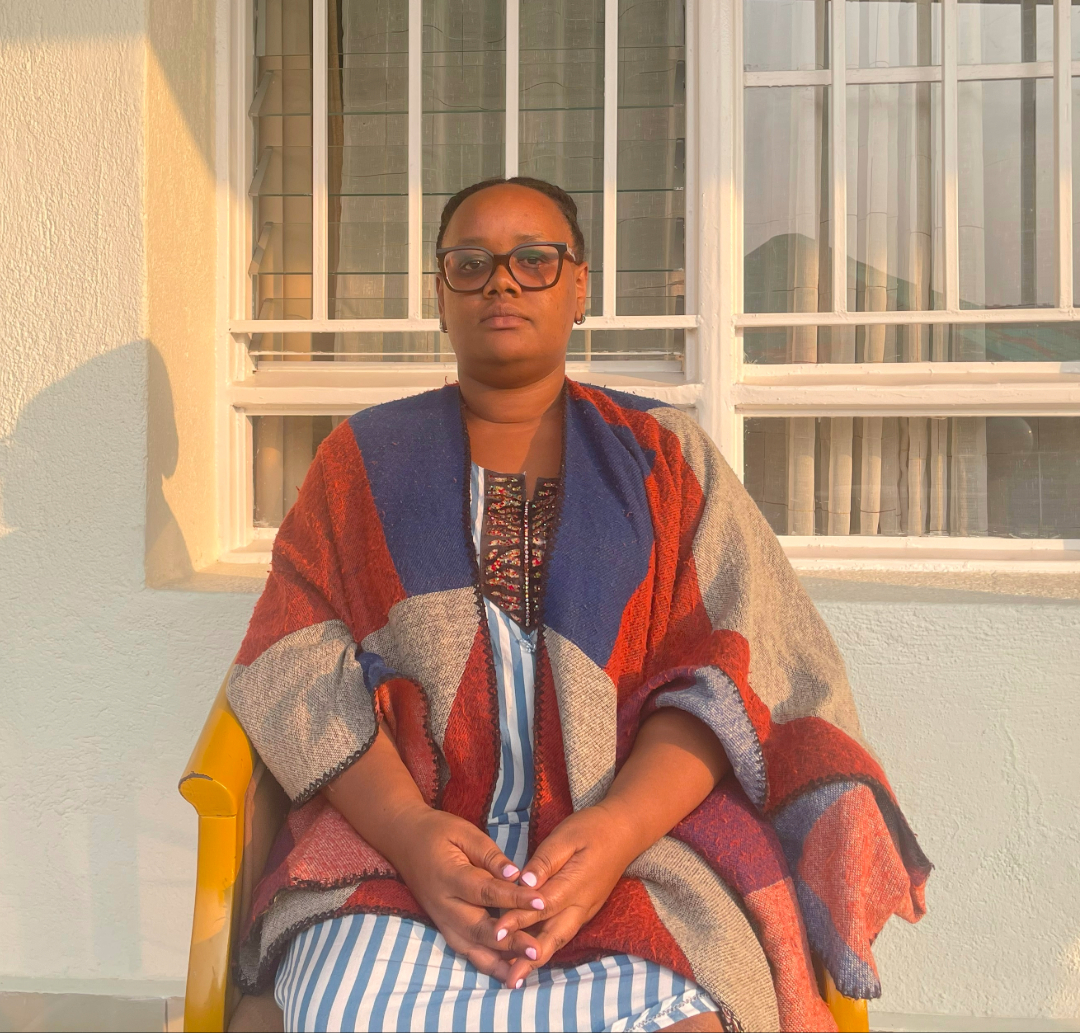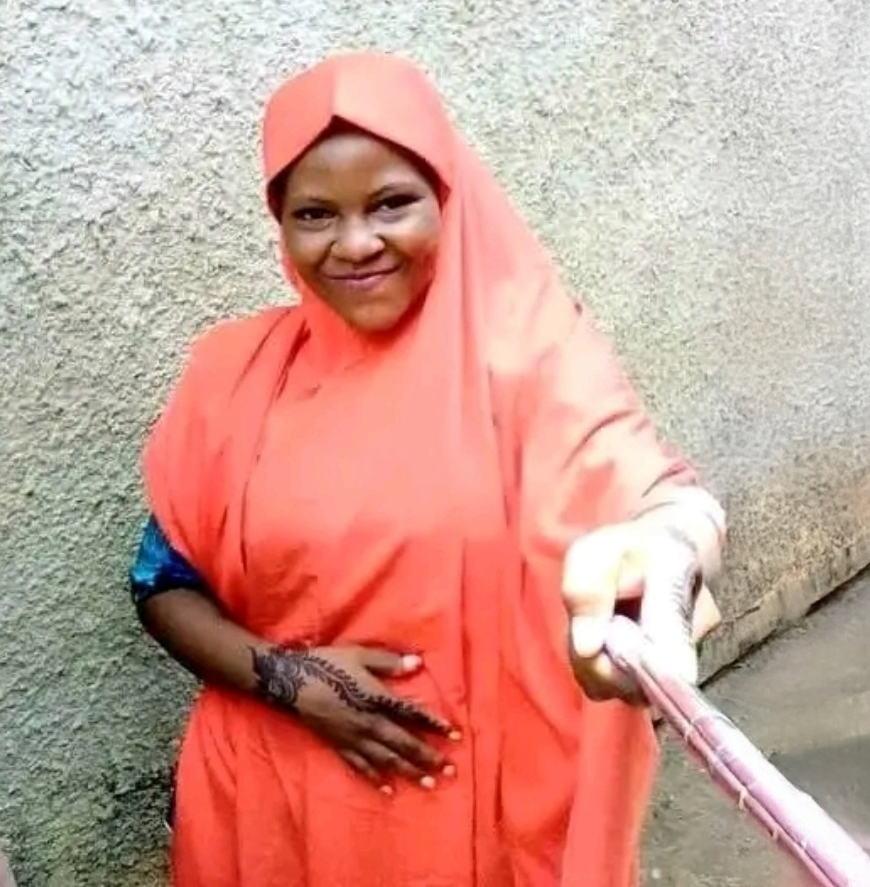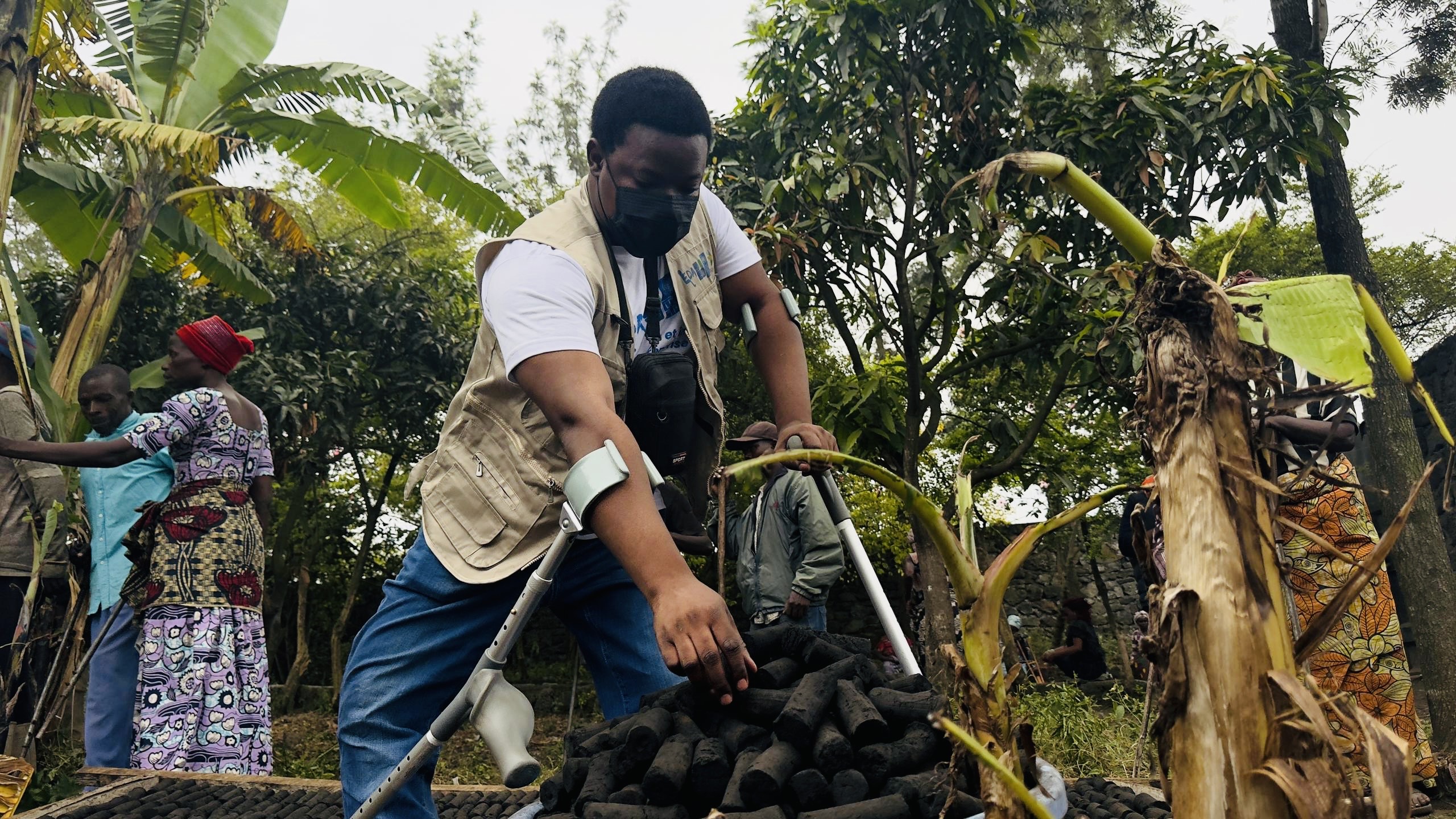
News
Dwarfism and the Importance of Universal Design
Play audio version
Rather Than Forcing People With Disabilities to Adapt to an Environment that Excludes Them, We Should Build a World Accessible to Everyone
February 28, 2022
Editor’s Note: This essay is adapted from DJP mentor Dan Kennedy’s book “Little People: Learning to See the World Through My Daughter’s Eyes” (Rodale 2003). Its discussion of inaccessibility issues connects to the DJP’s commitment to amplifying the voices of activists in the pursuit of global disability rights. Several of our fellows also have covered issues of accessibility (or lack of) in their reports for the DJP.
Early on during my week in Salt Lake City, where the Little People of America national conference was held in 2002, I went out to dinner with Robert Van Etten and his wife, Angela Muir Van Etten. Robert, a 52-year-old rehabilitation engineer, is a past president of LPA; his dwarfism type is SED, and he’s 3-foot-5. Angela, 48, is a past president of Little People of New Zealand, her native country. She has an exceedingly rare form of dwarfism known as Larsen syndrome and stands 3-foot-4. Like many middle-aged people with dwarfism, their mobility is limited but not entirely absent. Robert rode their wheelchair to the restaurant but told Angela that she could ride it back to the hotel.
Both Van Ettens have been heavily involved with access issues over the years — especially Angela, a lawyer who was appointed to serve on LPA’s so-called ANSI Committee, part of the American National Standards Institute. ANSI is a private organization that drafts model accessibility codes. Its codes are not law but are often adopted by government regulatory agencies. The issue is one that has preoccupied her since her youth. In her autobiography, Dwarfs Don’t Live in Doll Houses (note: she published her latest book, Always an Advocate, in 2021), she writes of the frustration she encountered in law school in New Zealand, where the elevator buttons were just out of reach:
The law library was on the fifth floor and the lecture rooms were on the sixth. However, the highest button I could reach on the elevator was number four! On the days when I was feeling energetic, I would walk the extra one or two floors, but that wasn’t very often. Otherwise, I would wait for someone to come or use an object such as my pencil case or umbrella to reach the button.
Things are better today, better in the United States than in New Zealand and most other countries, and getting better all the time. But there is still a long way to go. Angela Van Etten told me about her advocacy work in the U.S. during the past decade. It was a long, tangled tale of bureaucracy run amok, but basically what happened was this. When the Americans with Disability Act was signed by the first President Bush, Little People of America was not as involved as it should have been on disability issues, and thus the specific needs of dwarfs were not addressed. Automatic teller machines — ATMs — as well as self-service gasoline pumps were set at no more than 54 inches high, which is within the reach of a wheelchair-user with average-size arms but not within the reach of most little people.
LPA undertook a study — actually measuring people at a national conference — and found that 48 inches was the maximum height that most dwarfs could reach. After years of agitating, ANSI and the federal government finally went along with a 48-inch height for ATMs, and it is moving in that direction for gas pumps as well. The elevator industry has also proved cooperative, mainly because new computer technology will allow for the installation of just a few buttons on elevators even in very tall buildings rather than the one-button-per-floor arrangement that is predominant today. The revised standards pertain only to new construction, and it will no doubt take many years before their effects are widely seen. Still, they are a crucial step in the right direction.
“We don’t care how you do it,” Angela told me, describing the ANSI philosophy. “We don’t ask you to lower anything. If you can’t lower it for whatever reason, just provide an alternative. It’s usability that we’re looking for. I’ve actually said this to them: ‘We do not expect the world to get down on its knees.’ It’s a matter of industry will to recognize this population. They generally will not do it unless you make them.”

The concept behind accessibility is something that advocates refer to as “universal design.” The idea is to make facilities accessible to the disabled and able-bodied alike, and to do it in such a way that it not only doesn’t inconvenience the able-bodied but actually helps them. The classic example is curb cuts, which have turned out to be as much of a godsend for parents pushing strollers as for wheelchair-users.
Cara Egan, a 35-year-old former vice president of public relations for LPA who has achondroplasia, wrote her master’s thesis at Johns Hopkins University on LPA’s role in public-policy areas such as accessibility. She was so busy in Salt Lake that I didn’t have a chance to interview her. But I caught up with her at her home near Washington, D.C., several weeks later. At one point I walked up to an ATM to get some money for the parking garage. It was at a comfortable level for me, but barely reachable for her. She asked, “Would it really have inconvenienced you if the machine had been built maybe a foot lower?” Of course not, I replied.
That led to a discussion of one of the principal arguments for limb-lengthening surgery: that it makes dwarfs more functional in a human-made environment built for people between five and six feet tall. “I think that’s bullshit,” Egan said, explaining that such a philosophy assumes it’s the person who should be changed rather than the environment. The beauty of universal design, she said, is that it makes things accessible for everyone. “I was able to get down to the Metro today, park my car, put money in the meter, go down and get a Metro fare card, go downtown, and I didn’t have to ask anybody for anything,” she said. “We have shown that we can do it, so why not do it? We’ve got the creative energy. I think that’s a total cop-out. My mother is 5-9. She goes into the grocery store and there are things that she cannot reach. And she will ask somebody to help her.”
Egan does most of her own grocery-shopping at a store in nearby Rockville, Maryland, that has been redesigned with shorter shelves and smaller carts. “And it’s not like the tall people are staying away, because it’s easier for everybody,” she said. “I just think we’re getting smarter about how things are designed.”
Dan Kennedy is a professor of journalism at Northeastern University and the father of an adult daughter with achondroplasia, the most common form of dwarfism. This essay is adapted from Kennedy’s book “Little People: Learning to See the World Through My Daughter’s Eyes” (Rodale 2003) and is reprinted with permission under a Creative Commons license, which may be viewed at littlepeoplethebook.com.
News From the Global Frontlines of Disability Justice

Disability in a Time of War
Ukraine’s long-standing system of institutionalizing children with disabilities has only worsened under the pressures of war. While some facilities received funding to rebuild, children with the highest support needs were left in overcrowded, understaffed institutions where neglect deepened as the conflict escalated. “The war brought incredibly immediate, visceral dangers for this population,” says DRI’s Eric Rosenthal. “Once the war hit, they were immediately left behind.”

The Language Gap
More than a year after the launch of Rwanda’s Sign Language Dictionary, Deaf communities are still waiting for the government to make it official. Without Cabinet recognition, communication in classrooms, hospitals, and courts remains inconsistent. “In the hospital, we still write down symptoms or point to pictures,” says Jannat Umuhoza. “If doctors used sign language from the dictionary, I would feel safe and understood.”

Failure to Inform
Zulaihatu Abdullahi dreamed of finishing school and building a home of her own. But at 19, she died of untreated kidney disease because no one could communicate with her in sign language. Her story reveals how Deaf Nigerian women are often left without lifesaving care. “If only she had access to healthcare where someone could guide her… explain each step, she might still be here,” says Hellen Beyioku-Alase, founder and president of the Deaf Women Aloud Initiative.

Disability in the Crossfire
In Goma, Democratic Republic of Congo, ongoing conflict and forced displacement have hit people with disabilities hardest. Rebel groups seized supplies from a clean cooking initiative designed to support displaced people with disabilities, leaving many trapped without aid. “It is still a big difficulty for authorities or government or humanitarian organizations to make a good decision which includes everyone,” says Sylvain Obedi of Enable the Disable Action.

Gaza’s Amputees
At the Nahla Prosthetics & Orthotics Center in Gaza, staff wake up each day wondering if it’s safe to open before treating a handful of people in need of new limbs, adjustments, or psychosocial support. With famine declared in Gaza City and aid restricted, the center faces mounting shortages of materials and trained technicians. “Our colleagues call the situation a nightmare with no end,” says Zaid Amali, Humanity & Inclusion’s senior advocacy officer in Palestine.

‘People like Me Can Dare to Dream of Standing Upright’
Rwanda’s decision to cover prosthetic and orthotic services under national health insurance is being hailed as a milestone for disability rights. Advocates say it marks a shift toward greater inclusion and access to essential mobility aids. “This is more than a health policy,” says Jean Baribwira. “It is dignity, inclusion, and hope.” For many, the change represents long-overdue recognition of mobility as a basic right.
Read more about ‘People like Me Can Dare to Dream of Standing Upright’